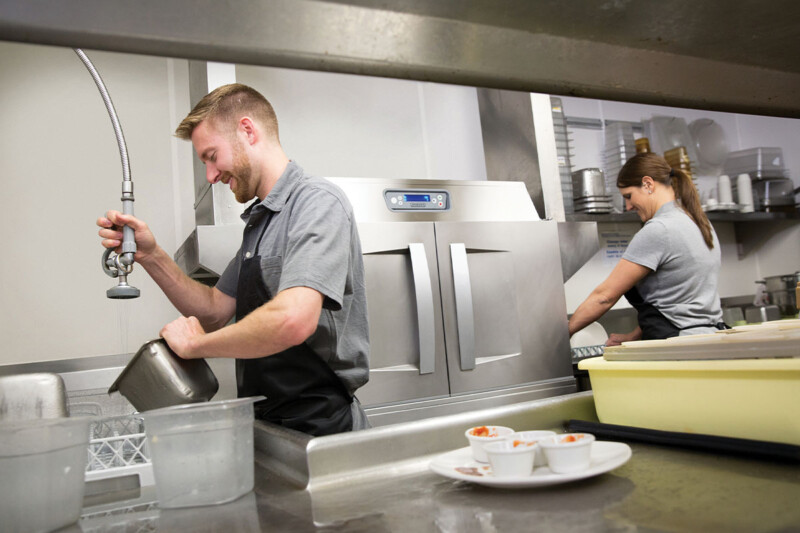From combi ovens to fryers, ventless equipment provides a great deal of flexibility for operators designing new cooking spaces and adding menu items. If you’ve been pondering the purchase of ventless equipment for your foodservice operation, there are four areas where this option provides an advantage.
The Pros
Reduced installation costs. “It can be a big expense to run welded ductwork to a hood and install a fan, and then you also have to factor in the daily operation of that fan,” says Trish Jass, senior operations project manager, Rippe Associates. Eliminating the need for a hood takes that cost away entirely.
Flexibility in design. Ventless equipment offers a myriad of options for operators looking to create new cooking spaces or add to existing kitchens. No longer are equipment choices restricted by a building situation where there’s a lack of access to the outside because the cooking area has a number of floors above it or structural issues prevent ductwork installation. Also, Mark Finck, senior manager/lab manager, Frontier Energy Food Service Technology Center, adds, “Often [front-of-house] areas don’t have ventilation hoods, and these ventless equipment options allow the ability to operate in those areas.”
Space savings. Ventless equipment is a good option when there just isn’t room to install an exhaust hood with proper overhangs on all sides to capture exhaust.
“It can be a big expense to run welded ductwork to a hood and install a fan.”
—Trish Jass
Adding to the menu. All of the factors mentioned play a part in how ventless equipment can help locations expand menu items. For example, a ventless rapid-cook oven can sit on a countertop to add toasted sandwiches to a deli.
The Cons
While ventless equipment can help operators, in some cases, vented equipment serves as a better option.
Ventless equipment can play a part in creating an extra load on an HVAC system, as some types of ventless equipment run at higher temperatures than their vented counterparts to have enough heat to catalyze the grease produced in cooking. Two other considerations are power source and type of menu items. Ventless equipment runs on electric power rather than gas. Also, operations with high-fat cooking situations might need to install an exhaust hood.
The Bottom Line
When deciding between vented or ventless equipment, the most important factor is your own jurisdiction’s health and safety codes. Your local authority will have the final say on what appliances they allow to operate, based on space, environmental concerns and safety considerations.
RELATED CONTENT
- Advertisement -
- Advertisement -
- Advertisement -
TRENDING NOW
- Advertisement -
- Advertisement -
- Advertisement -


